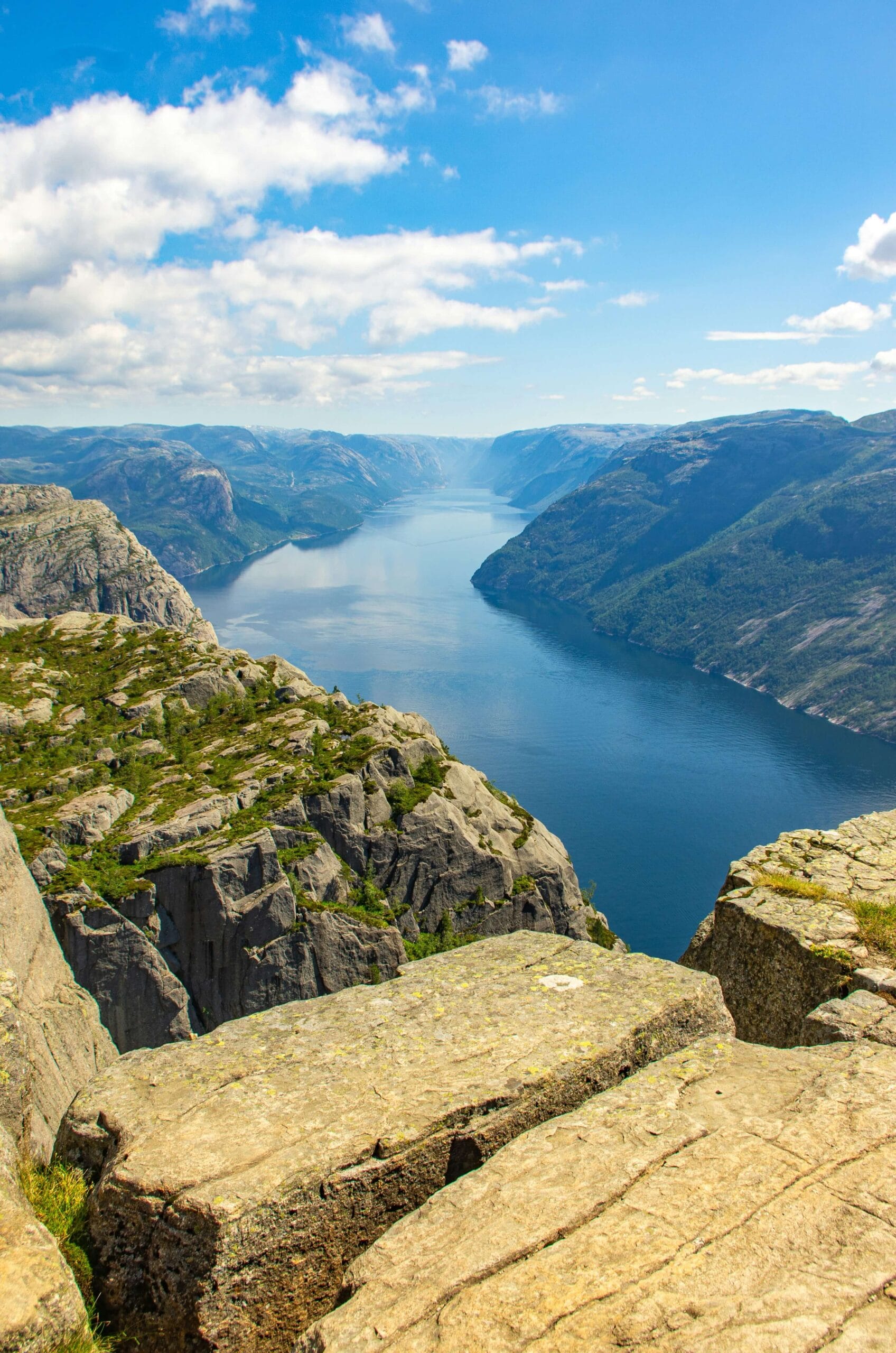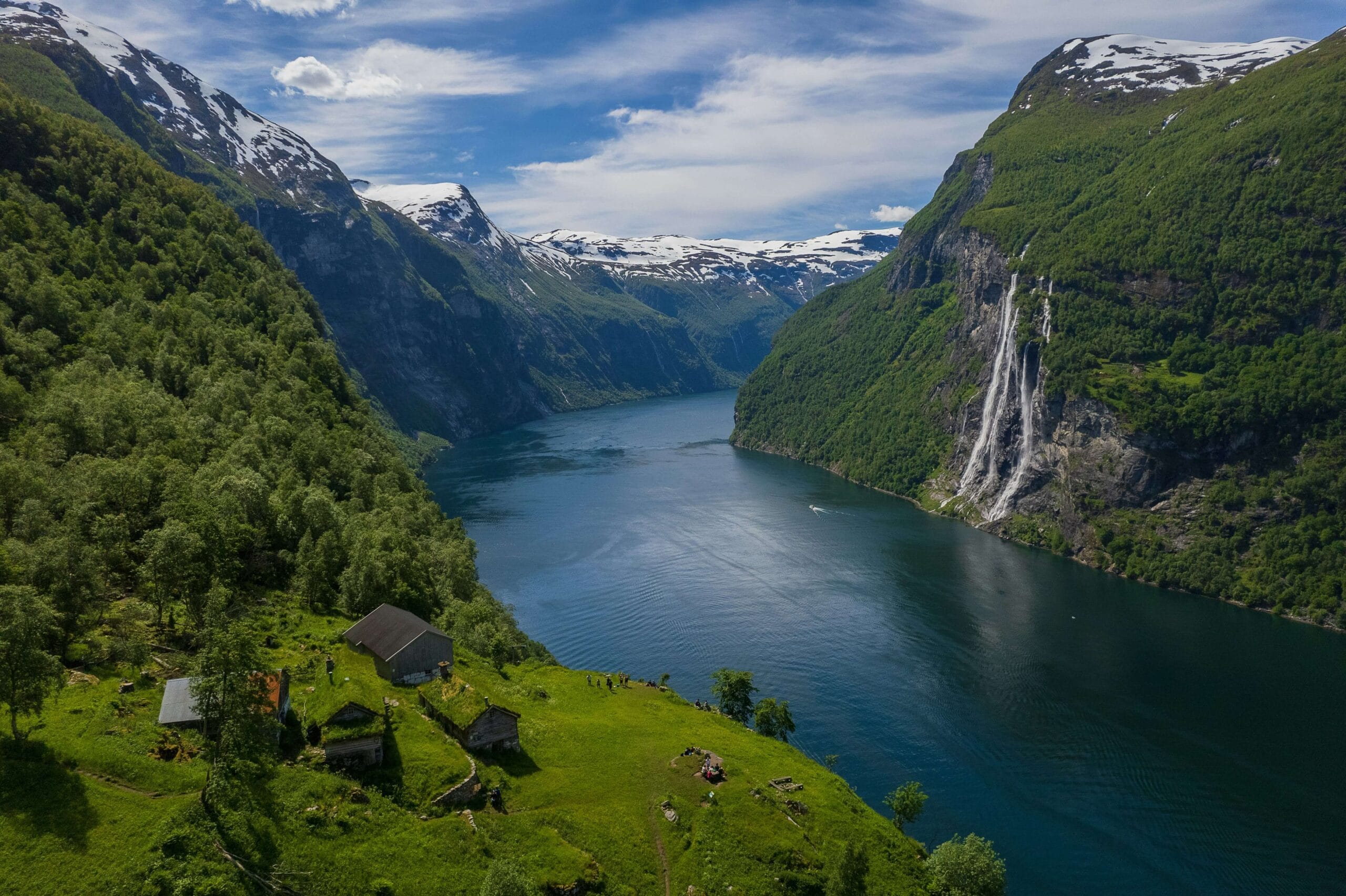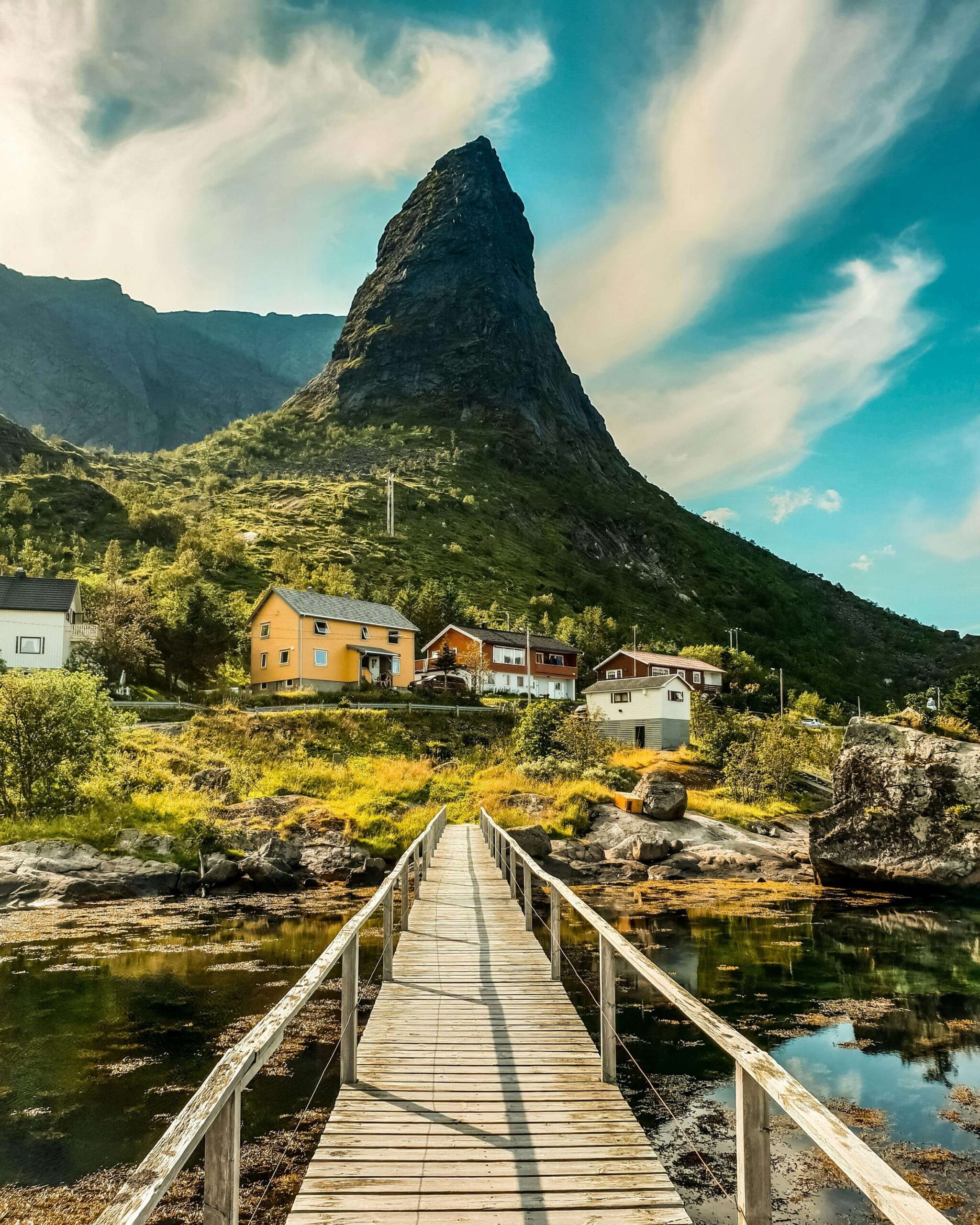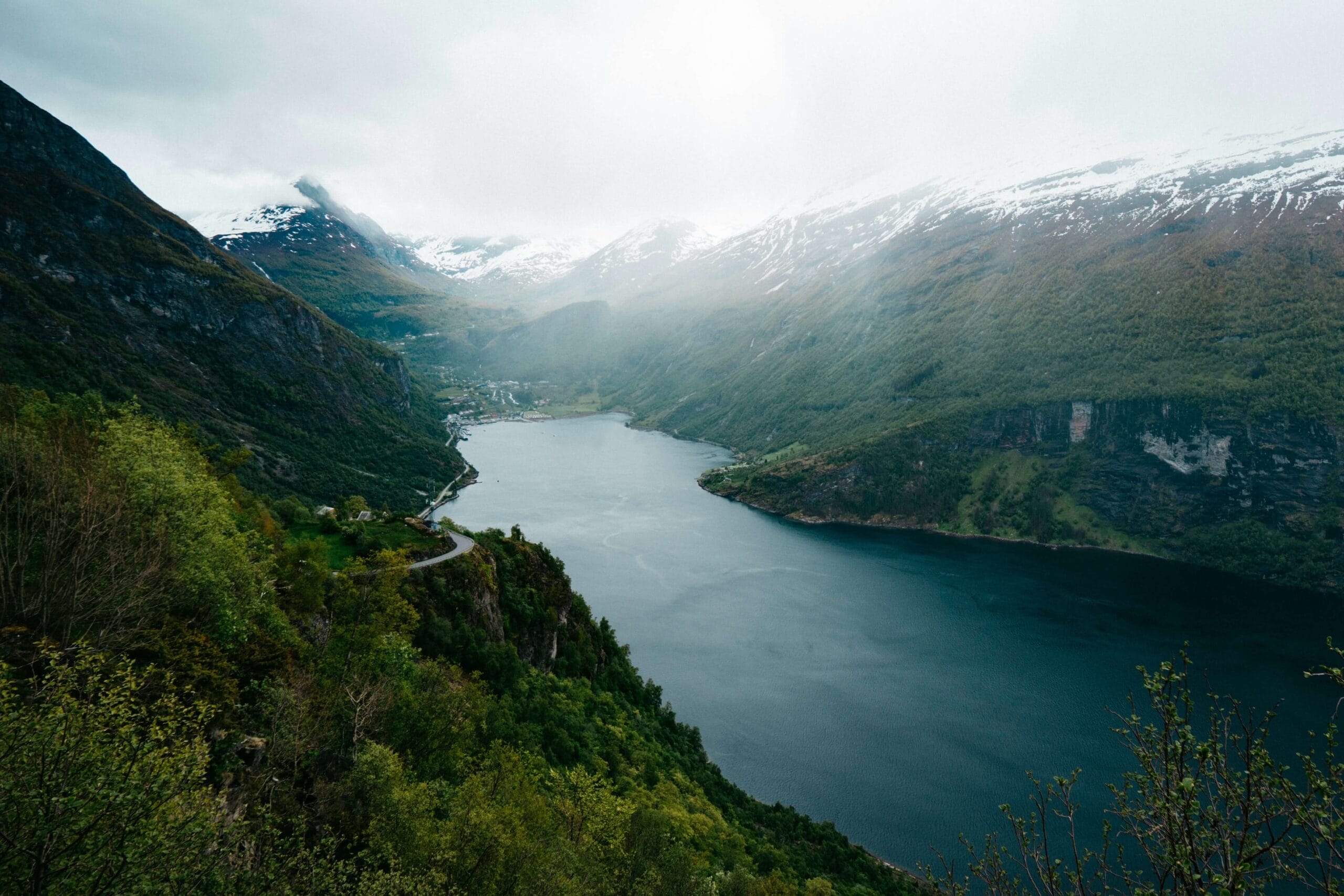Norwegian Fjords Cruise 2025: Your Complete Guide to Norway's Majestic Waterways

Picture this: you're standing on the deck of a cruise ship, the crisp Norwegian air filling your lungs as towering cliffs rise like ancient cathedrals from impossibly blue waters. Waterfalls cascade down granite walls in silvery ribbons, their thunderous roar echoing across valleys carved by glaciers millions of years ago. This is what awaits you on a norwegian fjords cruise 2025 – an experience that will leave you breathless and forever changed.

I've spent countless hours exploring these magnificent waterways, and I can tell you with absolute certainty that nothing quite prepares you for the raw beauty of Norway's fjords. Whether you're considering a norwegian fjords cruise from southampton 2025 or planning to embark from Bergen, this comprehensive guide will help you navigate everything from choosing the perfect itinerary to understanding the weather patterns that make each season uniquely magical.
Drawing on insights from local guides, fellow travelers, and my own adventures through these pristine waters, I'll share everything you need to know about experiencing the fjords in 2025. From the best cruise lines like P and O norwegian fjords and princess cruises norwegian fjords to practical tips about norwegian fjords weather, consider this your trusted companion for planning an unforgettable journey.
What Exactly is a Fjord? Understanding Norway's Natural Masterpieces

Before we dive into planning your adventure, let's explore what makes these landscapes so extraordinary. A fjord, in geological terms, is a long, narrow inlet flanked by steep cliffs or slopes, carved by glacial activity over millions of years. Think of it as nature's own grand canyon, but filled with seawater instead of desert air.
Here's where it gets interesting – Norwegians use the term "fjord" more broadly than the rest of the world. While scientists define fjords as glacier-carved inlets, locals might call any long, narrow bay a fjord. This can sometimes confuse visitors, but it also speaks to how deeply these waterways are woven into Norwegian culture and identity.
The formation story is truly remarkable. During the last ice age, massive glaciers slowly carved their way through the landscape, creating deep valleys. As the ice retreated and sea levels rose, these valleys were flooded, creating the dramatic waterways we see today. Some of these fjords plunge over 1,000 meters deep – deeper than the Empire State Building is tall.
While Norway boasts the world's most spectacular fjords, you'll also find these geological wonders in New Zealand's South Island, Iceland's Westfjords, Canada's British Columbia, and Chile's Patagonia. But nowhere else offers the accessibility, variety, and sheer concentration of fjords quite like Norway.
When to Visit: Timing Your Norwegian Fjords Adventure
The question I'm asked most often is: "When should I book my fjords cruise 2025?" The answer depends entirely on what kind of experience you're seeking, as each season paints the fjords in completely different colors.
Summer (June-August): The Classic Fjords Experience

Summer is peak fjords season, and for good reason. The norwegian fjords weather during these months is at its most forgiving, with temperatures ranging from 15-25°C (59-77°F). What truly makes summer magical is the extended daylight – up to 20 hours of sunshine in some regions, with the midnight sun phenomenon occurring above the Arctic Circle.
I'll never forget my first summer cruise on Iona norwegian fjords route, watching waterfalls glisten in the 11 PM sunshine while fellow passengers marveled at the golden light dancing across the water. The weather is ideal for hiking, kayaking, and all those bucket-list photographs you've been dreaming of.
The downside? Everyone else has the same idea. Ports can feel crowded, and popular viewpoints might require patience to get that perfect shot. Cruise prices also peak during these months.
Spring (April-May): Nature's Awakening
Spring in the fjords is pure magic. This is when Norway transforms into a fairy tale, with fruit orchards blooming along the Hardangerfjord and waterfalls at their most powerful from snowmelt. The crowds haven't arrived yet, giving you a more intimate experience with nature.
The norway fjords weather can be unpredictable – one moment you're basking in sunshine, the next you're bundling up against a sudden shower. But this variability adds drama to the landscape, with ever-changing light creating countless photo opportunities.
Autumn (September-October): A Photographer's Dream
Autumn might be my personal favorite time for a fjords cruise. The landscape explodes in brilliant reds, oranges, and golds, reflected perfectly in the still waters below. The hiking trails are quieter, making those challenging climbs to viewpoints more peaceful and rewarding.
If you're hoping to catch the Northern Lights, late autumn offers your first chances in the northern fjords, particularly around Lyngenfjord. The weather is cooler and can be rainy, but the dramatic skies often make for more spectacular scenery.
Winter (November-March): Arctic Wonderland

Winter fjords cruising is not for everyone, but it's an experience I'd recommend to any adventurous soul. The landscape transforms into a pristine white wonderland, with snow-capped peaks reflecting in dark waters. The crowds disappear entirely, leaving you with an almost private audience for nature's grand theater.
The norwegian fjords weather in winter is harsh – expect temperatures well below freezing and limited daylight in the north. However, this is prime Northern Lights season, and there's something profoundly moving about watching the aurora dance over snow-covered fjords from the warmth of your ship's deck.
The Best Norwegian Fjords: Nature's Greatest Hits
With over 1,000 fjords to choose from, deciding where to focus your time can feel overwhelming. Here are the fjords that have captured my heart and why they deserve a place on your 2025 itinerary.
Nærøyfjord: The UNESCO Gem That Inspired Frozen
Tucked away as a branch of the mighty Sognefjord, Nærøyfjord holds the distinction of being both a UNESCO World Heritage Site and the inspiration for Disney's Frozen. The moment your ship enters this narrow passage, you'll understand why.

The fjord is so narrow in places – just 250 meters wide – that you feel like you could reach out and touch the towering cliffs on either side. Waterfalls cascade directly onto your ship's deck (pack a rain jacket!), and the dramatic scenery shifts with every turn.
From the charming village of Gudvangen, I highly recommend renting a small motorboat for the ultimate flexibility. There's something magical about navigating these waters at your own pace, perhaps stopping to photograph the Stalheimskleiva – Europe's steepest road that winds dramatically up the mountainside.
For hikers, the Rimstigen trail offers rewarding views, though the steep climb isn't for the faint of heart. The Viking Valley of Njardarheimr in Gudvangen provides a fascinating glimpse into Norway's history, complete with costumed villagers and axe-throwing demonstrations.
Geirangerfjord: The Superstar of Norwegian Fjords
If Nærøyfjord is the hidden gem, Geirangerfjord is the superstar everyone talks about. Another UNESCO World Heritage Site, this fjord delivers on every promise of Norwegian natural beauty.
The famous waterfalls here have names and personalities all their own. The Seven Sisters waterfall dances down the mountainside like ribbons of silver, while across the fjord, the Suitor (also called the Friar) stands alone, as if courting the sisters from afar. The Bridal Veil waterfall completes the romantic trio with its delicate, misty cascade.
The Dalsnibba viewpoint, accessible by a toll road, offers what many consider Europe's most spectacular fjord vista. At 1,500 meters above sea level, the view stretches across the entire fjord system – a perspective that photographs simply cannot capture.
For adventure seekers, the abandoned Skageflå farm offers one of Norway's most challenging yet rewarding hikes. Perched precariously on a narrow ledge 250 meters above the fjord, this historic farm tells the story of the hardy souls who once called these impossible places home.
Sognefjord: The King of Fjords
Stretching over 200 kilometers inland and plunging 1,308 meters deep, Sognefjord rightfully claims the title of Norway's longest and deepest fjord. What makes it truly special, however, are its many branches, each offering distinct experiences.
The Urnes Stave Church, visible from your ship as you cruise the Lustrafjord branch, is Norway's oldest stave church and another UNESCO World Heritage Site. Its intricate wood carvings represent some of the finest examples of medieval Norwegian craftsmanship.
At the end of Lustrafjord sits Skjolden, one of my favorite hidden gems. This quiet village feels like the end of the world in the best possible way. Here, you can kayak in pristine waters, take RIB tours to remote waterfalls, or hike to the Sengaberget viewpoint for breathtaking panoramas.
The Sognefjellet road, Norway's highest mountain pass, offers dramatic alpine scenery that rivals anything in the Alps. The Oscarshaug viewpoint along this route provides sweeping vistas across multiple fjords and glacier-capped peaks.
Aurlandsfjord: Where Tourism Meets Thrill
As a branch of Sognefjord, Aurlandsfjord has perfected the art of combining spectacular scenery with accessible tourism. The village of Flåm has become synonymous with fjords tourism, and for good reason.
The Stegastein viewpoint is perhaps Norway's most photographed spot – a glass and steel platform jutting out 650 meters above the fjord like a diving board into the sky. Visit at sunset if possible, when the golden light transforms the entire valley into something ethereal.
The Flåm Railway (Flåmsbana) deserves its reputation as one of the world's most beautiful train journeys. The 20-kilometer descent from Myrdal to Flåm drops 863 meters through landscapes that seem designed by fairy tale illustrators.
For adrenaline junkies, the Flåm Zipline – the longest in the Nordic countries at 1,381 meters – offers a thrilling way to experience the fjord from above. The sensation of flying through the valley with the fjord spread below is absolutely unforgettable.
Lysefjord: The Hiker's Paradise
Located near Stavanger in southern Norway, Lysefjord might lack the UNESCO credentials of its northern cousins, but it more than makes up for it with some of Norway's most iconic hiking destinations.
Preikestolen (Pulpit Rock) is the hike that launched a thousand Instagram posts. This flat-topped cliff platform, jutting 604 meters above Lysefjord, offers surreal views that seem to defy gravity. The 8-kilometer round-trip hike is moderately challenging but accessible to most reasonably fit hikers.
For serious adventurers, Kjeragbolten presents a more formidable challenge. This massive boulder, wedged between two cliff faces 984 meters above the fjord, has become an iconic (if slightly terrifying) photo opportunity. The hike is demanding, but the sense of accomplishment is unmatched.
Rødne Fjord Cruise offers comfortable boat tours with panoramic windows, allowing you to spot the famous Vagabond's Cave and the wild goats that call these cliffs home. Their guides share fascinating stories about the fjord's formation and local legends.
Hardangerfjord: The Orchard Fjord
Norway's second-longest fjord, Hardangerfjord, offers a gentler beauty that's particularly stunning in spring when fruit orchards bloom along its shores. Accessible from both Bergen and the adventure town of Odda, this fjord combines accessible beauty with serious hiking challenges.
Trolltunga ranks among Norway's most demanding day hikes – a 28-kilometer round-trip endurance test that rewards successful hikers with an iconic cliff platform extending over the fjord. The hike typically takes 10-12 hours, but the photographs and sense of accomplishment last a lifetime.
The Husedalen valley offers a more accessible alternative, where a moderate hiking trail takes you past four powerful waterfalls. The Folgefonna Glacier, one of Norway's largest glaciers, provides opportunities for guided glacier walks during summer months.
Nordfjord: Wilderness and Glacial Majesty
Nordfjord, with its branches Innvikfjorden and the village of Olden, represents the perfect blend of accessibility and wilderness. This region offers some of Norway's most approachable glacier experiences.
The Briksdal Glacier hike in Jostedalsbreen National Park is surprisingly easy – a gentle 3-kilometer walk through pristine wilderness to a 9,000-year-old glacier tongue. The contrast between lush green valleys and ancient ice is striking.
Olden itself is a picture-perfect Norwegian village, complete with a charming white church and local eateries serving traditional fare. The Loen Skylift, one of the world's steepest cable cars, whisks visitors 1,011 meters up Mount Hoven for sweeping views across the entire fjord system.
Best Ways to Experience the Fjords: Choose Your Adventure
The beauty of Norwegian fjords lies not just in their spectacular scenery, but in the variety of ways you can experience them. Each method offers a unique perspective on these natural wonders.
Cruising: The Classic Fjords Experience
A norwegian fjords cruise 2025 remains the most popular way to experience these waterways, and for good reason. From the comfort of your ship, you'll witness an ever-changing panorama of cliffs, waterfalls, and charming villages without the stress of planning routes or booking accommodations.
Multi-day voyages like those offered by Hurtigruten provide the most comprehensive experience. These ships focus on sustainability and local cuisine, offering what they call the "Norwegian coastal kitchen" featuring fresh, local ingredients. Many routes operate year-round and even offer Northern Lights guarantees during winter months.
Luxury cruise ships from lines offering P&O norwegian fjords itineraries provide front-row seats to breathtaking scenery with added comfort and amenities. The Iona norwegian fjords routes have gained particular popularity for their environmental focus and innovative dining options.
Smaller boats and fjord safaris can navigate narrower waterways that larger ships cannot reach, offering more intimate encounters with waterfalls and wildlife. These tours often provide heated indoor seating with panoramic windows – essential for comfort during cooler months.
Day tours from major cities like Bergen or Oslo offer convenient options for travelers with limited time. Many combine fjord cruising with other attractions like the famous Flåm Railway.
Pro tip: Choose balcony cabins if your budget allows. Having private outdoor space to enjoy sunrise over the fjords or photograph wildlife without crowds makes the extra cost worthwhile.
Road Trips: Ultimate Flexibility
Driving through fjords country offers unparalleled flexibility to stop wherever the scenery captures your imagination. Norway's scenic routes are engineering marvels in themselves.
The Atlantic Ocean Road connects small islands with dramatic bridges that seem to leap across the ocean itself. During storms, waves crash over the road, creating an exhilarating (if slightly nerve-wracking) driving experience.
Trollstigen (The Troll's Path) winds up the mountainside through 11 hairpin bends, each offering increasingly spectacular views. The Stigfossen waterfall tumbles directly alongside the road, creating natural air conditioning during summer drives.
The Bergen to the Fjords route provides the perfect introduction to fjords country, with well-maintained roads and plenty of accommodation options along the way.
Hiking: The Most Immersive Experience
Nothing quite compares to experiencing fjords landscapes on foot. The diversity of hiking options means everyone from casual walkers to serious mountaineers can find their perfect trail.
Easy strolls like the Briksdal Glacier walk or village explorations in Geiranger and Flåm provide magnificent scenery without serious physical demands.
Moderate hikes such as Preikestolen or the Seven Sisters viewpoint offer iconic views as rewards for reasonable effort.
Challenging adventures like Trolltunga, Kjeragbolten, and Skageflå test your endurance but provide bragging rights and photographs that will amaze friends for years.
Essential tip: Start early to avoid crowds and allow plenty of time. Norwegian weather can change rapidly, so pack waterproof layers regardless of the forecast.
Kayaking: An Intimate Water-Level Perspective
Paddling through fjords waters provides an intimate connection with these environments that larger boats simply cannot match. The silence of kayaking allows you to hear waterfalls from great distances and spot wildlife that might hide from noisy engines.
Many outfitters offer guided tours requiring no previous kayaking experience, though reasonable fitness levels help with longer paddling days. The water remains cold even during summer, but modern dry suits keep paddlers comfortable.
Nærøyfjord and Geirangerfjord both offer spectacular kayaking opportunities, with rental shops and guide services in nearby villages.
Village Exploration: Cultural Connections
The small communities scattered throughout fjords country offer glimpses into traditional Norwegian life that cruise ship visits often miss.
Geiranger provides the full tourist experience with museums, shops, and restaurants, plus the excellent Norwegian Fjord Centre explaining the area's geological and cultural history.
Aurland and Flåm offer charming village atmospheres with traditional wooden architecture and local craft shops.
Olden delivers quintessential Norwegian village charm, complete with the famous "sail-away moment" as your ship departs – a scene so picturesque it seems staged.
Skjolden provides the most authentic experience, feeling genuinely remote and unspoiled by mass tourism.
Practical Planning: Making Your Fjords Dream Reality
Packing for Success
Norwegian fjords weather can change dramatically within hours, making layered clothing essential. Even summer days might start sunny and warm but turn cool and rainy by afternoon.
Essential items include:
- Waterproof jacket and pants
- Warm fleece or wool layers
- Good grip hiking boots
- Comfortable walking shoes for villages
- Warm hat and gloves (even in summer)
- Sunglasses and sunscreen
- Camera with extra batteries
- Small backpack for day trips
- Binoculars for wildlife spotting
Money Matters
Norway operates as an almost entirely cashless society. Credit and debit cards are accepted everywhere, from major hotels to small village shops. However, carry 100-200 NOK (roughly £7-14) for occasional small vendors, public toilets, or church donations.
Staying Connected
Switch your phone to airplane mode while at sea to avoid expensive roaming charges. Use Wi-Fi when available in ports and on ships. Most cruise ships offer internet packages, though connections can be slow due to satellite limitations.
Booking Strategy
Popular tours and accommodations fill up quickly, especially during summer months. Book hiking guides, glacier tours, and unique experiences like the Loen Skylift well in advance. Many cruise excursions can be booked through your cruise line, though independent options often provide better value and more flexibility.
Right of Public Access
Norway's "allemannsretten" (right of public access) allows wild camping on uncultivated land, provided you stay at least 150 meters from houses or cabins and limit stays to two days. This opens incredible opportunities for stargazing and experiencing the fjords without crowds.
Frequently Asked Questions
Is a Norwegian fjords cruise worth the cost?
Absolutely. The combination of spectacular scenery, comfortable transportation, and cultural experiences justifies the expense. Look for cruises that actually enter the fjords rather than just sailing along the coast for the full experience.
Can you see the fjords without cruising?
Yes, though it requires more planning and driving. Road trips offer flexibility but involve significant travel time between fjords. Consider combining driving with short boat trips for the best of both approaches.
Which fjord should I prioritize?
It depends on your interests:
- UNESCO World Heritage beauty: Geirangerfjord or Nærøyfjord
- Serious hiking: Hardangerfjord or Lysefjord
- Urban accessibility: Oslofjord
- Off-the-beaten-path: Hjørundfjord or Lyngenfjord
How long do I need for a proper fjords experience?
A long weekend can provide a good introduction, especially with a cruise from Southampton. However, 7-14 days allows for deeper exploration and multiple fjords experiences.
Explore More Nordic Destinations
Your Unforgettable Norwegian Adventure Awaits
Standing on a ship's deck as it glides through Geirangerfjord, watching the Seven Sisters waterfall cascade into pristine waters while eagles soar overhead, you'll understand why Norwegian fjords capture hearts and imaginations like nowhere else on Earth. These ancient waterways offer a rare combination of accessible beauty and genuine wilderness, creating memories that last a lifetime.
Whether you choose a norwegian fjords cruise from southampton 2025, embark on a P and O norwegian fjords adventure, or plan an independent road trip through this magnificent landscape, the fjords will exceed your highest expectations. From the dramatic cliffs of Preikestolen to the intimate villages of Olden and Aurland, every turn reveals new wonders.
The norwegian fjords weather may be unpredictable, but that's part of the adventure. Pack those layers, charge your camera batteries, and prepare for an experience that will redefine your understanding of natural beauty.
Your fjords adventure awaits – start planning today, and prepare to fall in love with one of our planet's most spectacular destinations. The ancient ice and timeless waters of Norway are calling, and trust me, you want to answer.
For more travel inspiration and guides, visit Summer Affi's Travel Blog
